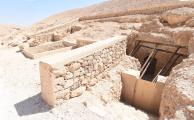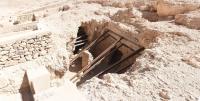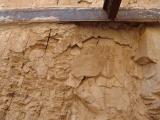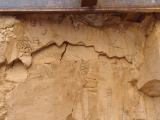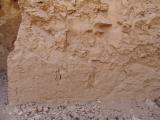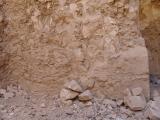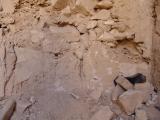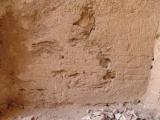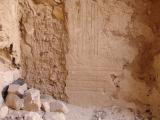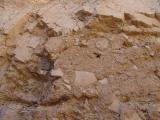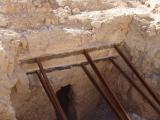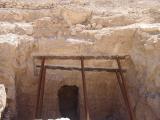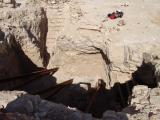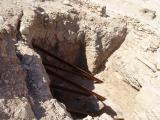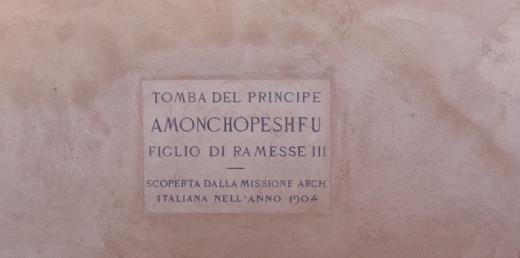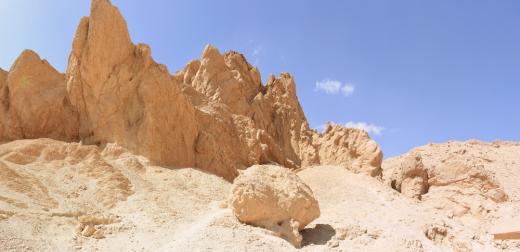QV 34
Anonymous Queen or Princess*
About
About
QV 34 is located on the south side of the main Wadi in the southwest branch. The tomb is accessed through a stepped Ramp with low remnants of mudbrick walls flanking the entrance to a pillared main chamber. A large chamber is located to the east of the main chamber, and a small side chamber to the south is on axis with the stepped entry ramp. The tomb intersects the earlier excavated shaft tombs of QV 87 on the east and QV 35 on the south. Two partially preserved rubble masonry pillars stand in the middle of the main chamber. The ceiling of the main chamber collapsed in antiquity, leaving the tomb exposed. The original ceiling vault is evident from its remains on the north side of the east wall. Large steel and wooden shoring is present in the main chamber and side chamber. Two wooden horizontal braces support the rock of the internal partition wall.
Remnant decoration in this tomb includes both incised plaster and raised relief painting. All wall faces, except in the side chamber, contain very thick layers of infill material of earth-based plaster and rock shards to create flat surfaces for the decoration due to the poor quality of the rock. Traces of plaster still survive on walls and pillars, but little surface decoration remains.
The tomb was cleared by the Franco-Egyptian Mission in 1987-88 and no records of prior excavation or visitation have been uncovered. Elizabeth Thomas noted that QV 34 was not discernible at the time of her visit (1959-60), but she records the presence of debris fill and an irregular saddle-shaped ceiling in her description of QV 35, which most likely refers to the collapsed ceiling of QV 34. She suggests that this tomb may relate to an Ernesto Schiaparelli discovery that was then backfilled out of safety concerns. The tomb has been dated to the 19th Dynasty and was reused in the Third Intermediate Period, Late Period, and Graeco-Roman Period.
A low rubble wall and metal door at the top of the ramp has been installed to deter entry. An additional rubble wall has been constructed between the main chamber and side chamber.
Noteworthy features:
QV 34 intersects the earlier excavated shaft tombs of QV 87 on the east and QV 35 on the south. The ceiling of the main chamber collapsed in antiquity, leaving the tomb exposed.
Site History
Dating
This site was used during the following period(s):
Exploration
Conservation
Conservation History
According to the GCI-SCA, two steel raking shores have been installed to support the upper portion of the south wall of the main chamber, where a large open vertical east-west oriented fracture exists behind the face of the wall. Wooden post and beam shoring supports the undercut south wall of the side chamber. Mortar repairs, probably using a gypsum and white cement mixture, have been carried out liberally to fill rock fractures and to prevent further rock loss, particularly in the side chamber. The mortar has been applied in a fracture between the layer of shale and the marl above, but the current presence of a wide crack between the mortar and the marl above is evidence of movement since the repair. Edging repairs and plaster fills were previously undertaken around areas of surviving painting in an attempt to stabilize the paintings.
Site Condition
The most striking feature of the tomb is the loss of its roof and overburden, the only example of such collapse in the QV. According to the GCI-SCA, this is thought to have occurred in antiquity and was likely due to the highly jointed rock, the thin overburden of the main chamber, and the proximity to the shale below. Severe fracturing is present throughout the rock of the tomb, primarily along the open joints of the tilted rock which curve down towards the north just beneath the surface. The upper part of the south and north walls of the main chamber present significant open fractures running east-west, likely formed when the ceiling collapsed. These walls also contain many perpendicular micro-fractures which make the rock friable and susceptible to small-scale loss. The walls of the entrance Ramp are similarly in very poor condition and it is difficult to distinguish between debris fill material and the poor quality bedrock. The thin ceiling of the east chamber (0.5-1 m) presents risk of collapse, especially if exposed to rainwater. The remains of the two pillars, constructed using stone and earthen mortar, exhibit signs of water erosion.
The wall plaster and painting remains in QV 34 are considered at high risk due to their poor condition and exposure. This tomb shows the greatest amount of loss in the shortest period of any of the decorated tombs in the QV. There are only small areas of surviving painted decoration and incised plaster that are unprotected and vulnerable. Mud drips due to past rain events obscure many of these areas making it difficult to establish the extent of surviving decoration. Edging repairs and plaster fills were previously undertaken around areas of surviving painting in an attempt to stabilize them. However, following rain events, in some cases all of the decorative plaster has been lost, leaving only the plaster repairs behind. The inherent poor quality of the marl and the presence of more clay-rich shale in this area of the QV, together with the thinness of the bedrock overburden as first excavated undoubtedly contributed to the collapse of this tomb's main chamber ceiling. Rain events and resulting direct flooding may have contributed to the swelling of the shale and related fracturing of the adjacent marl.
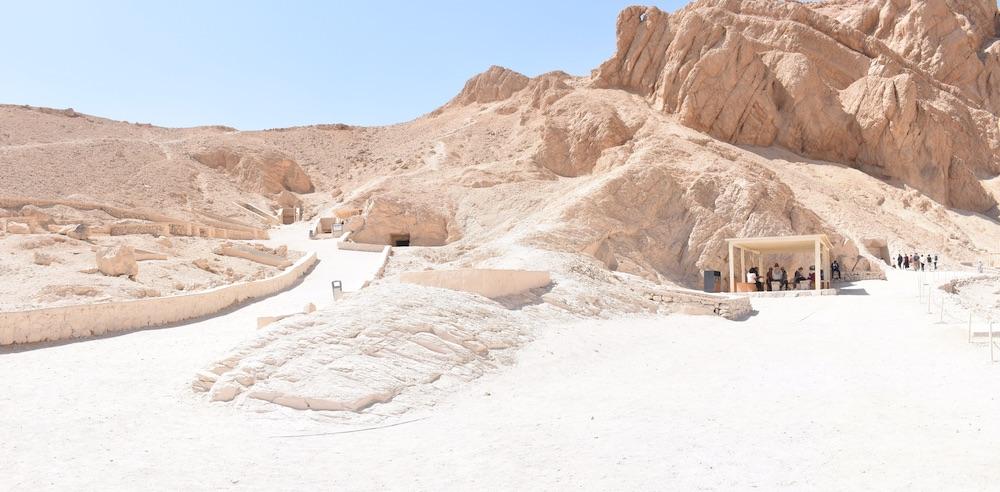
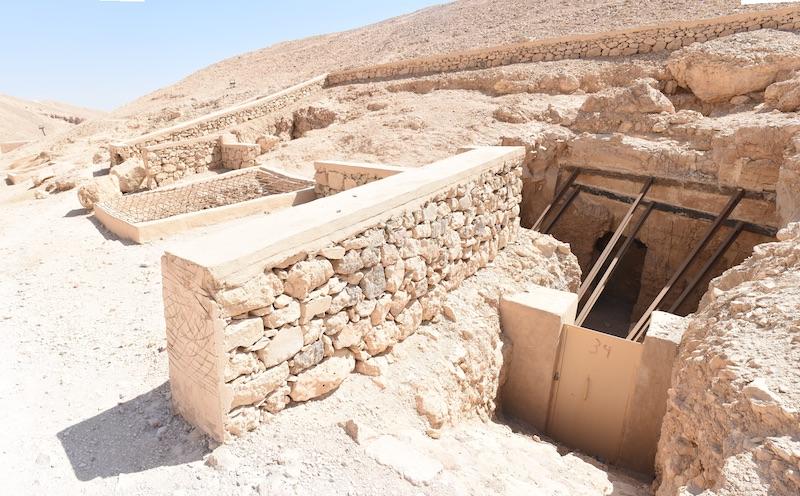

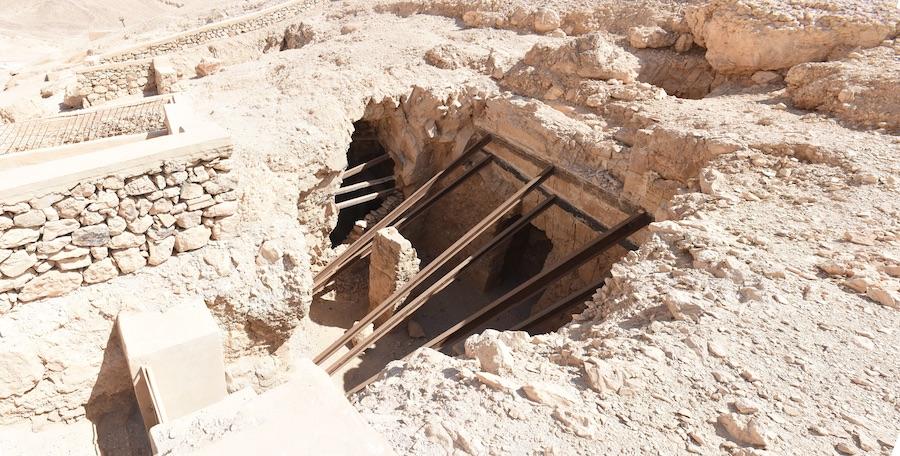
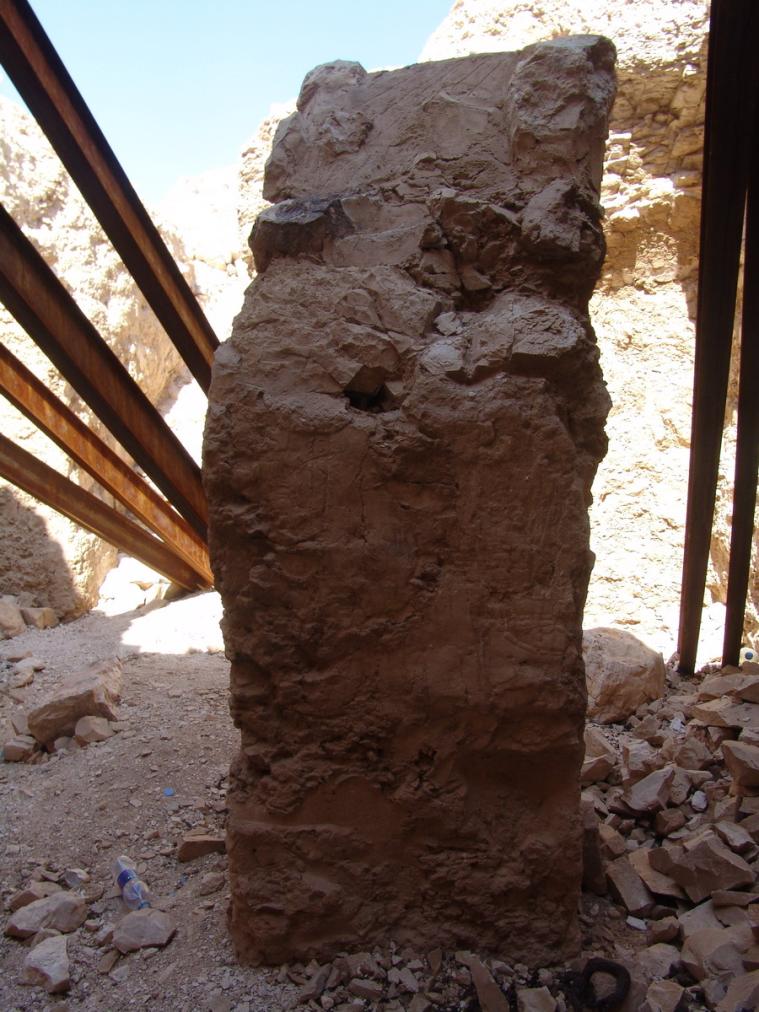
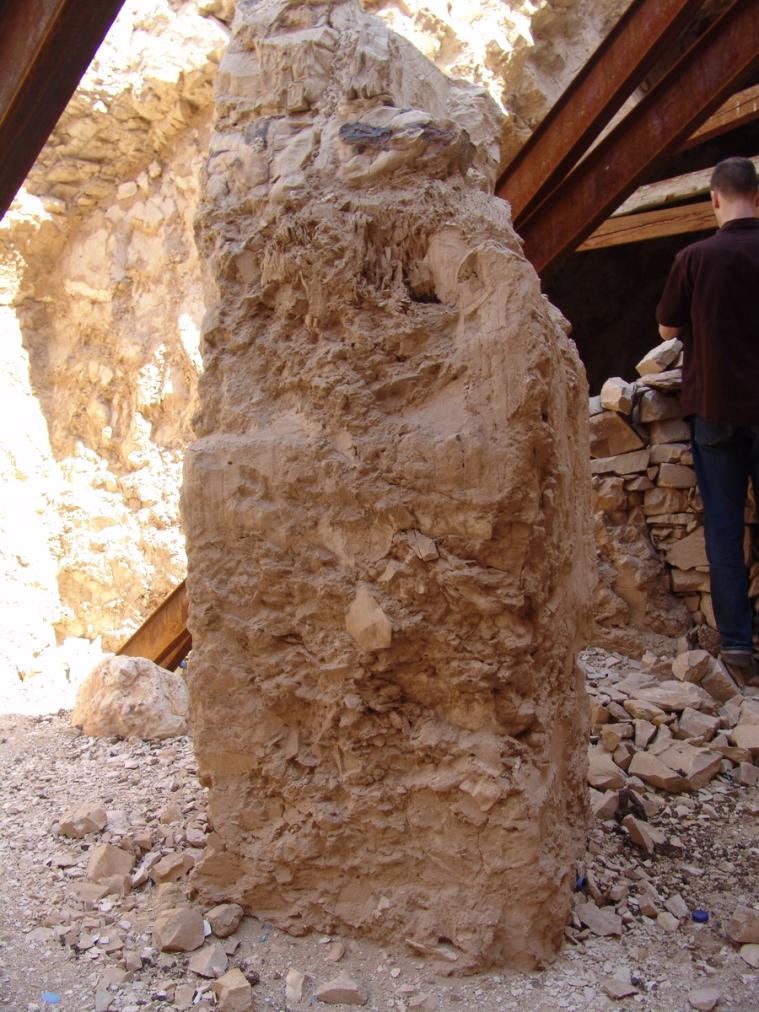
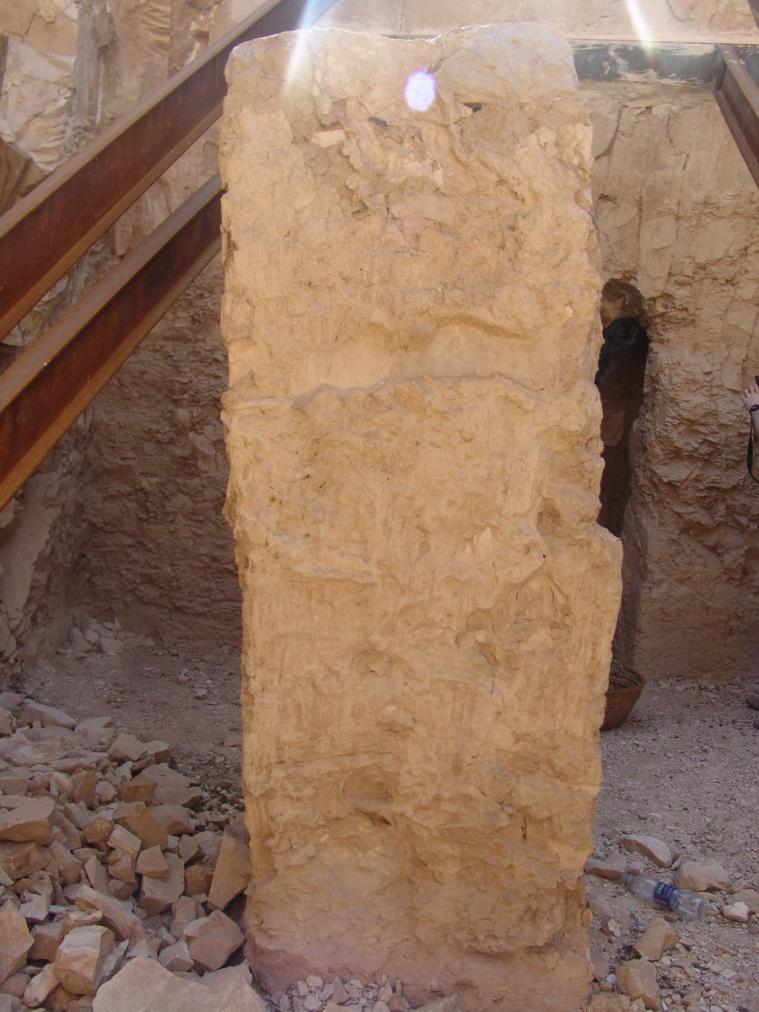
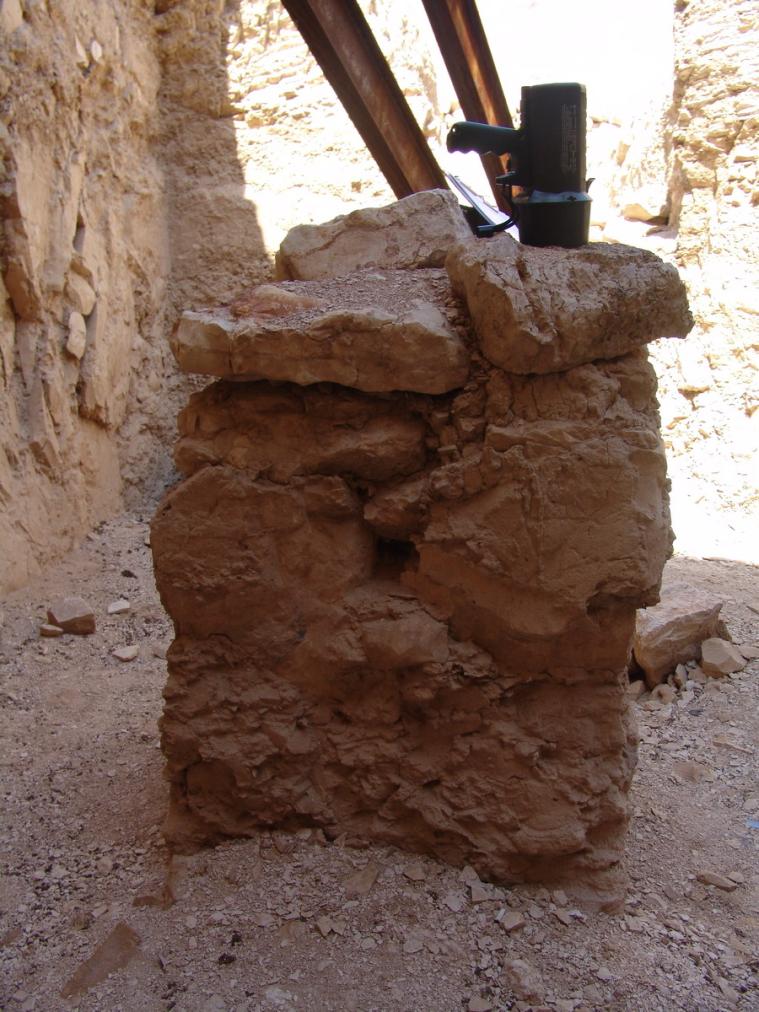
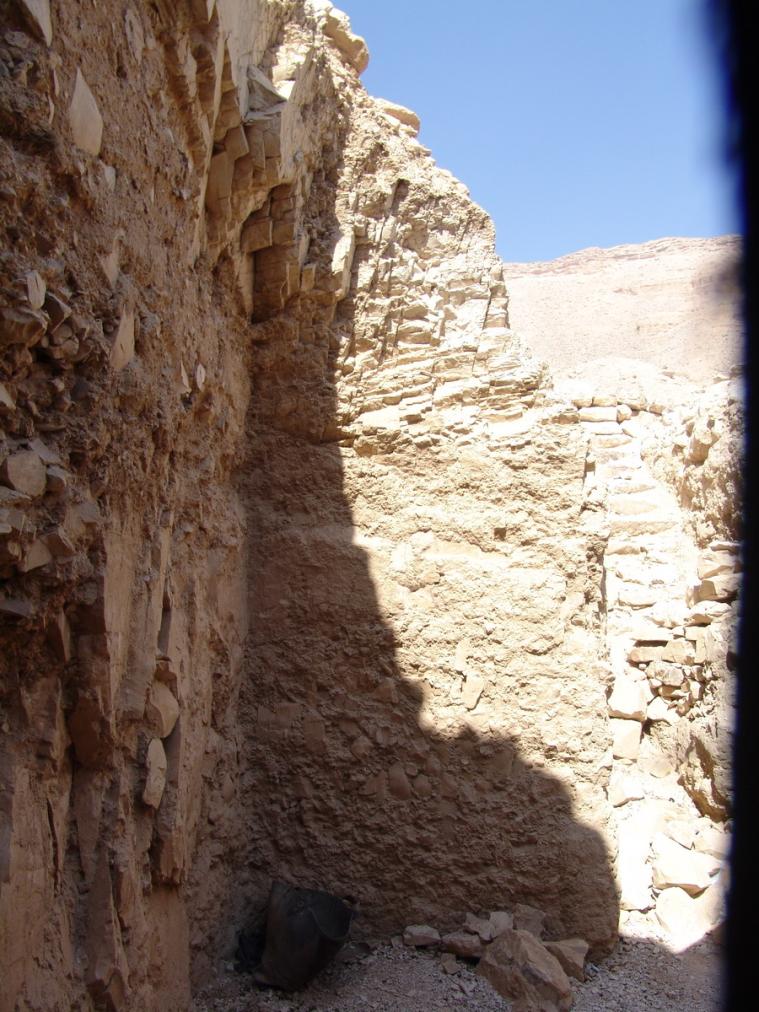
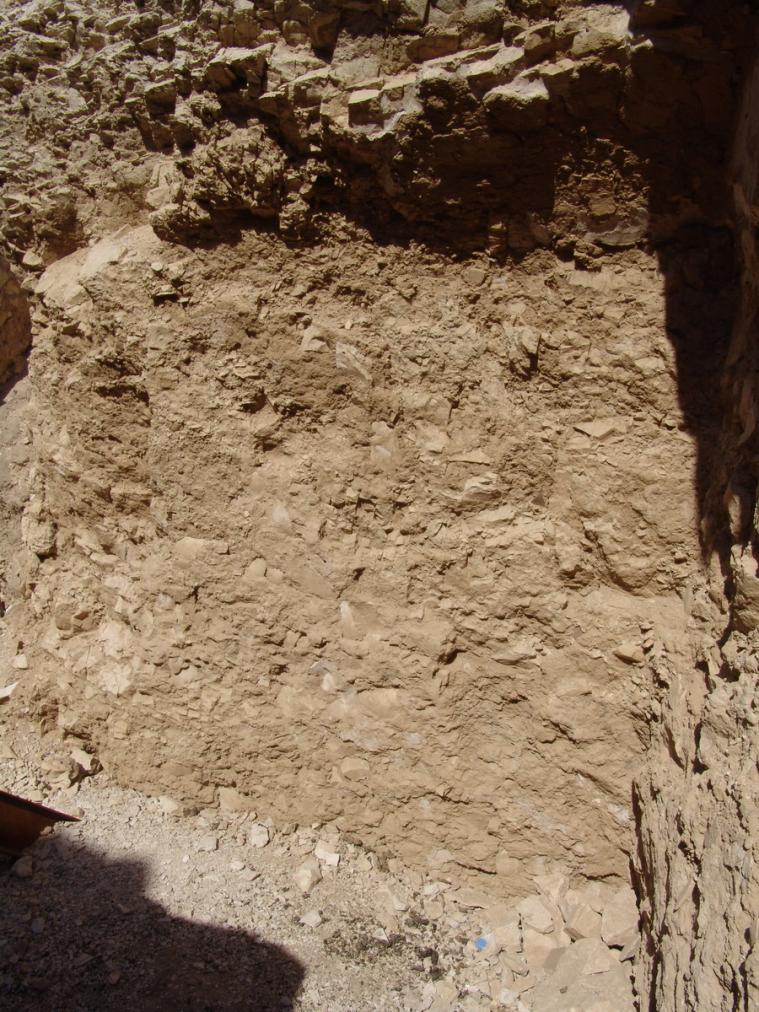
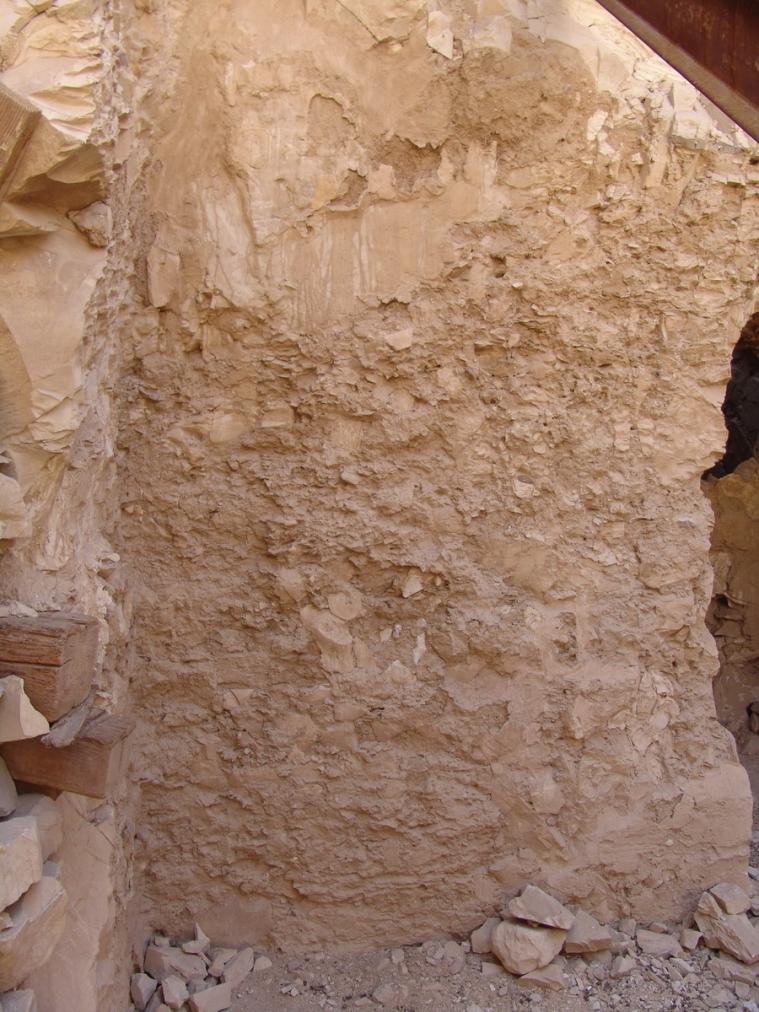
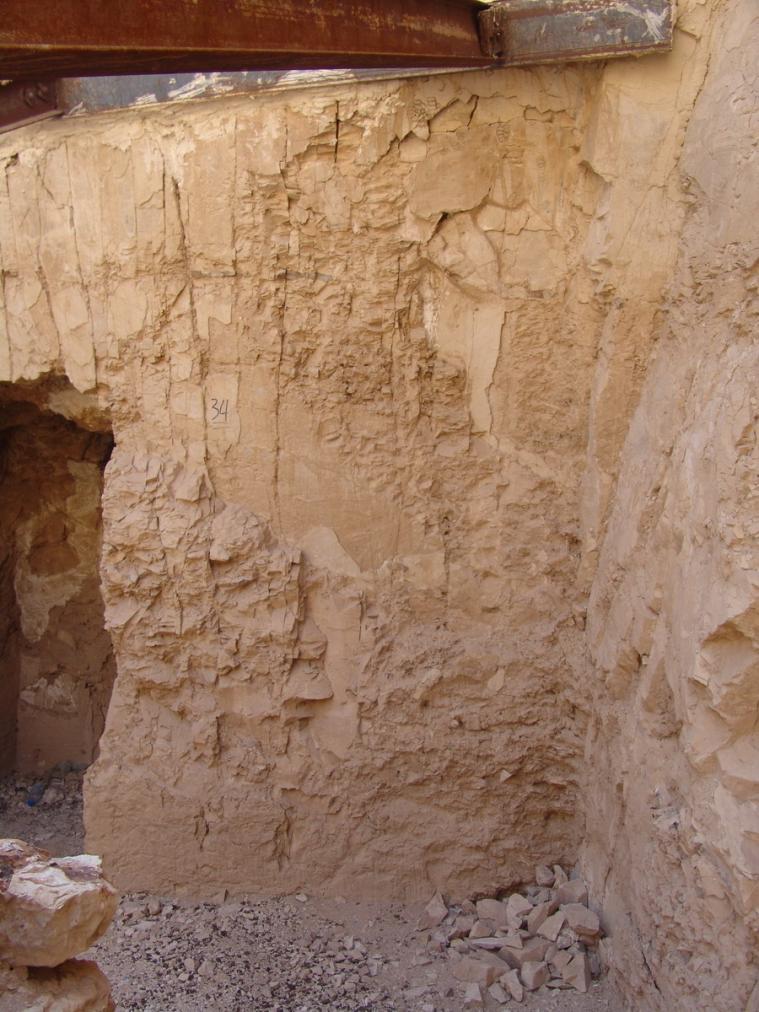
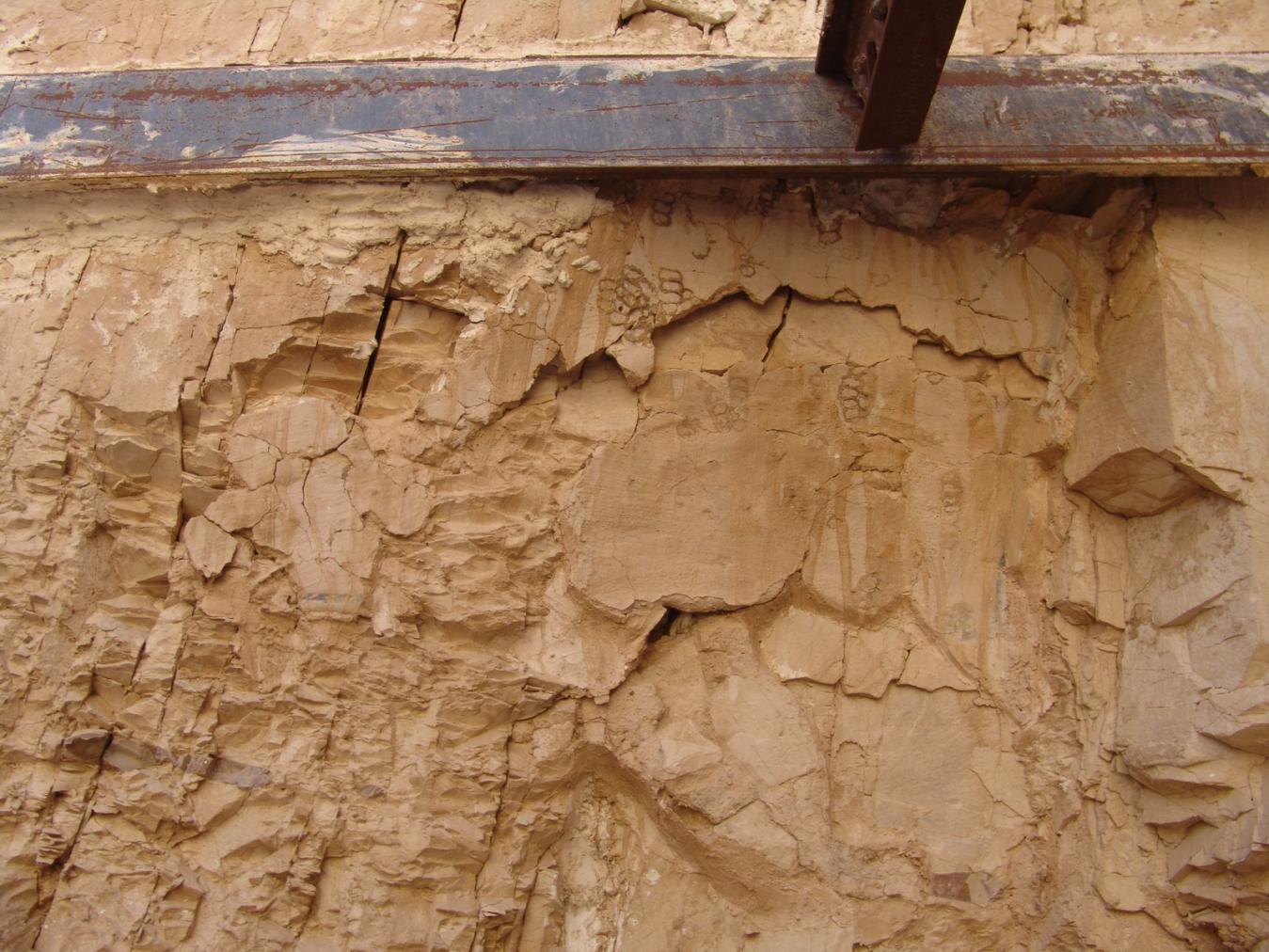
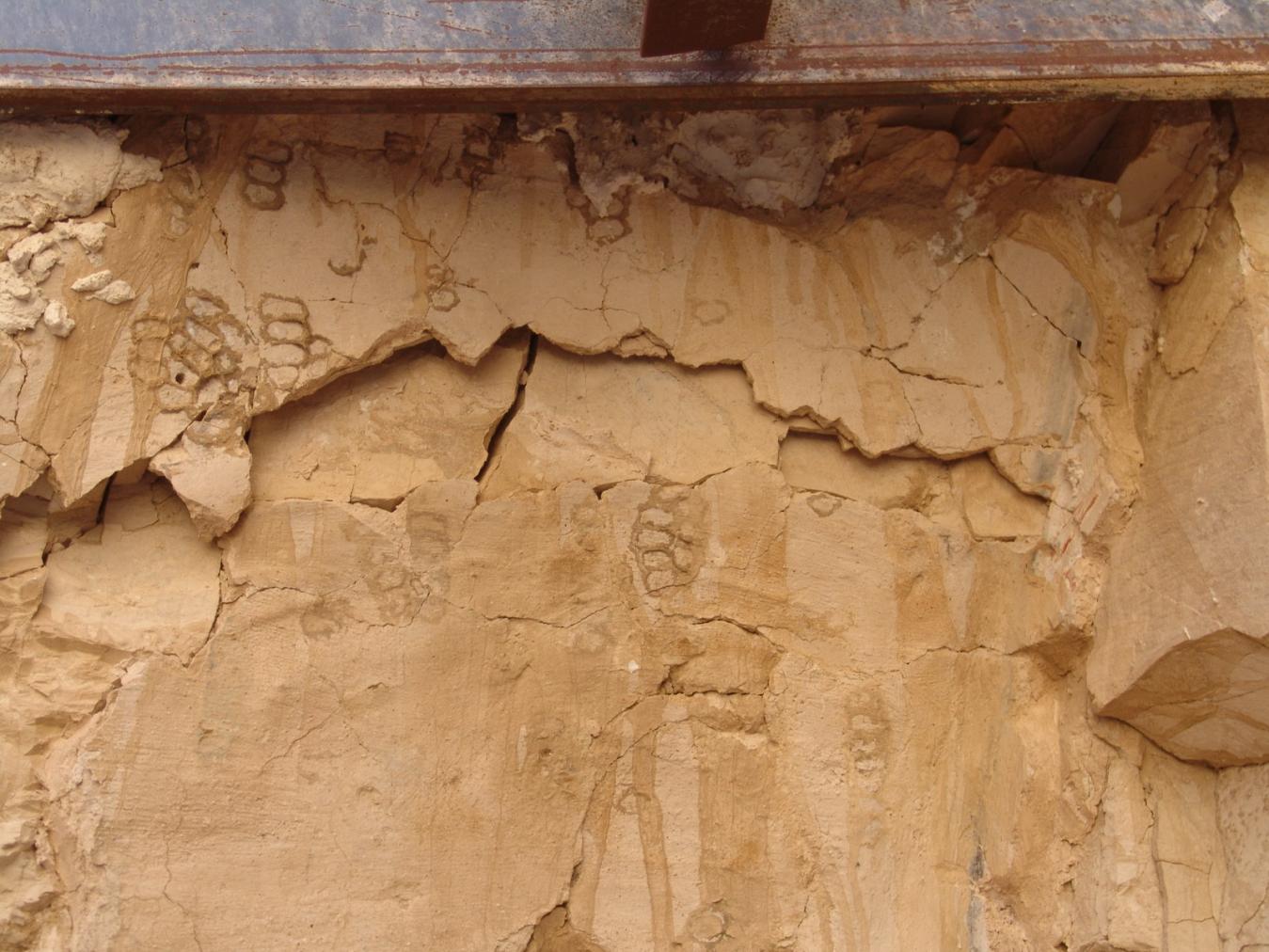
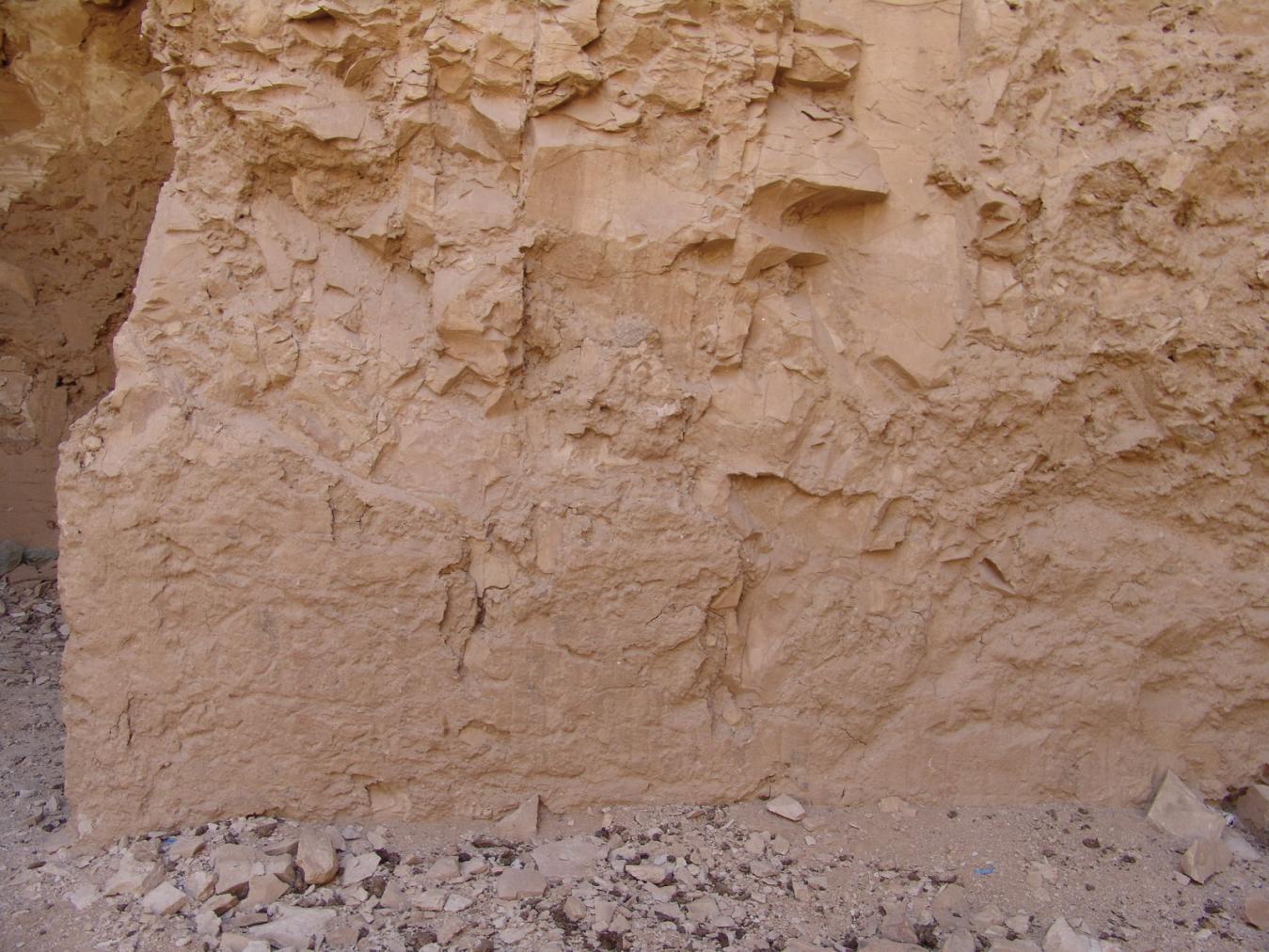
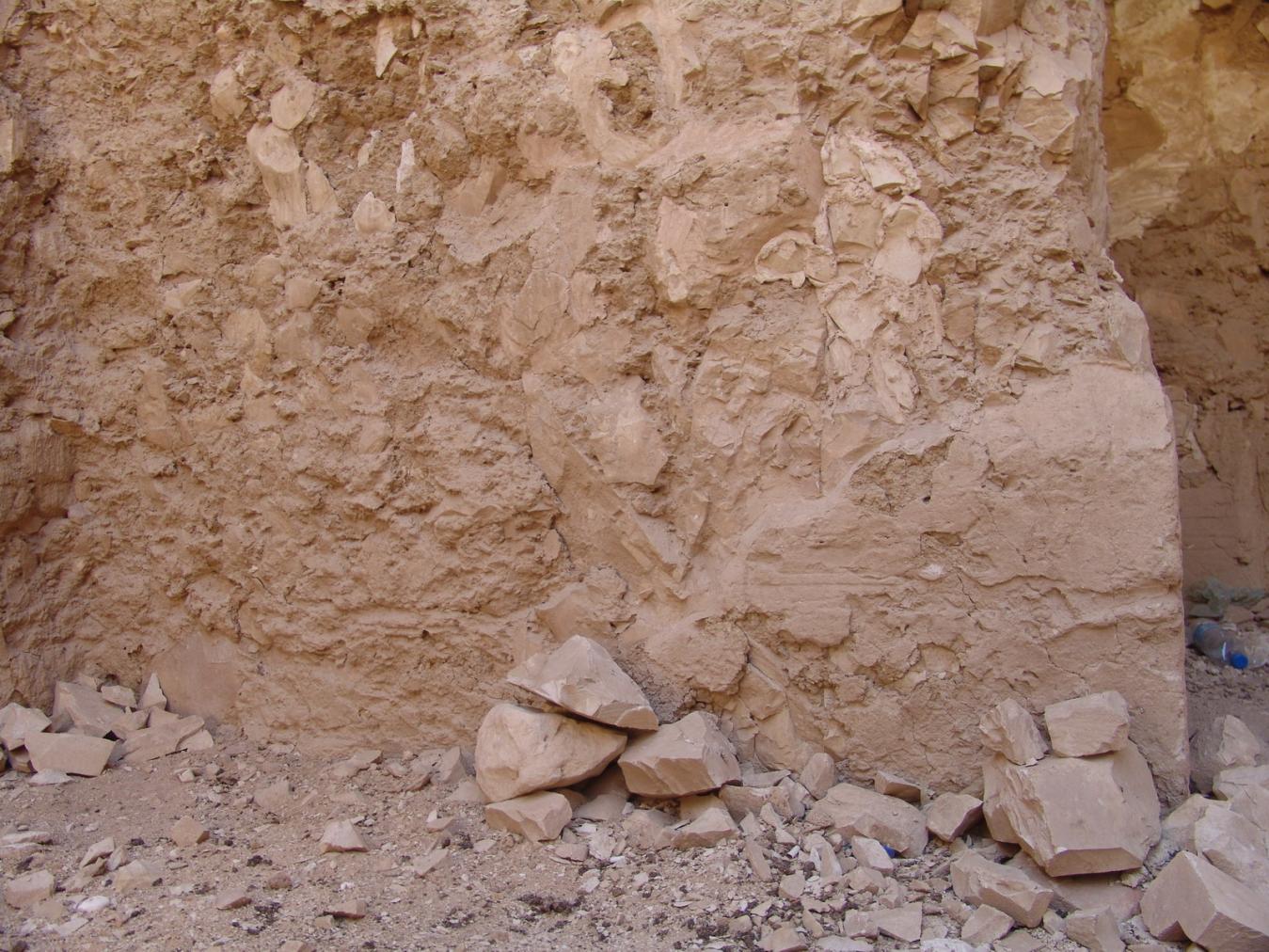
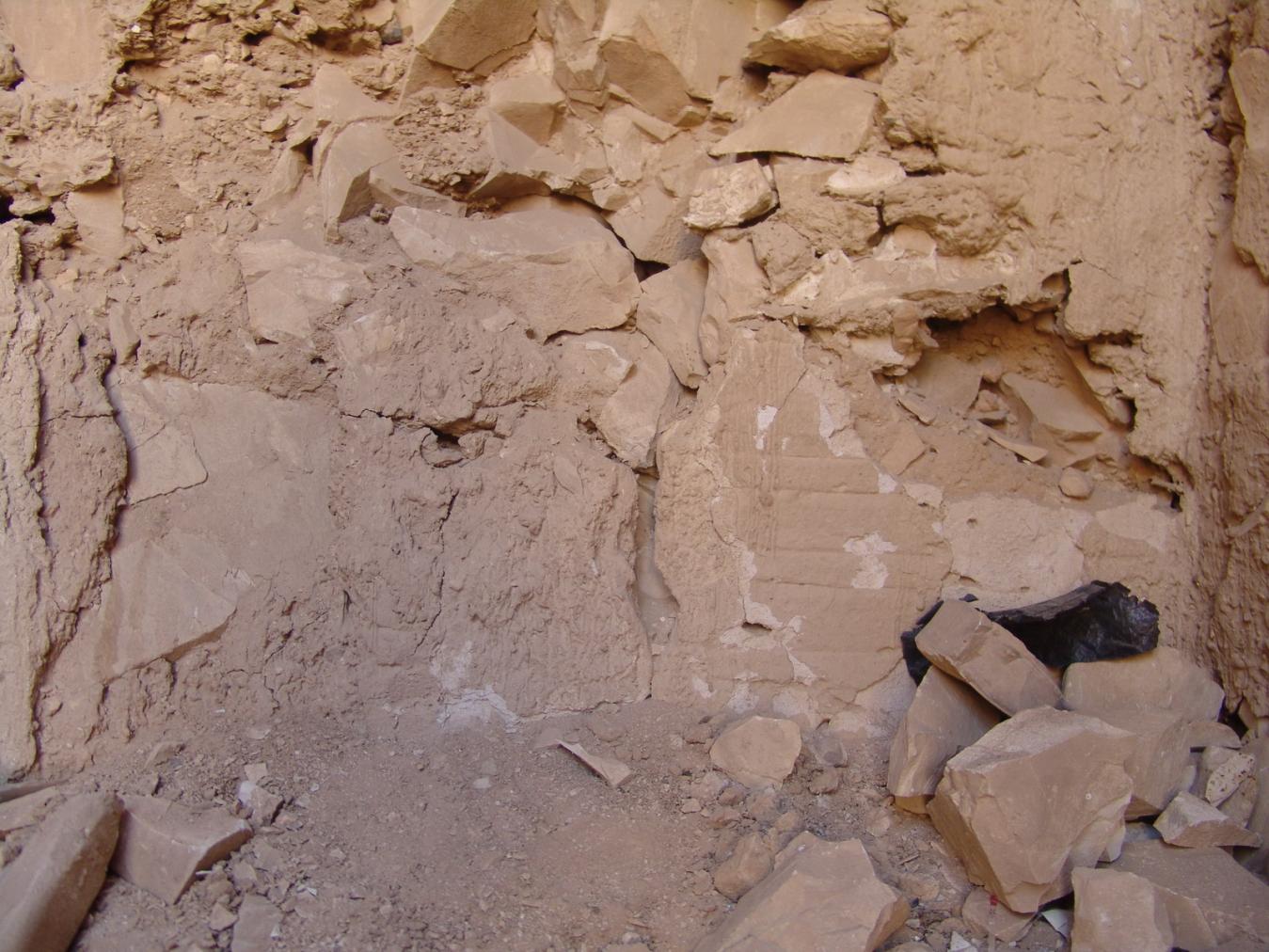
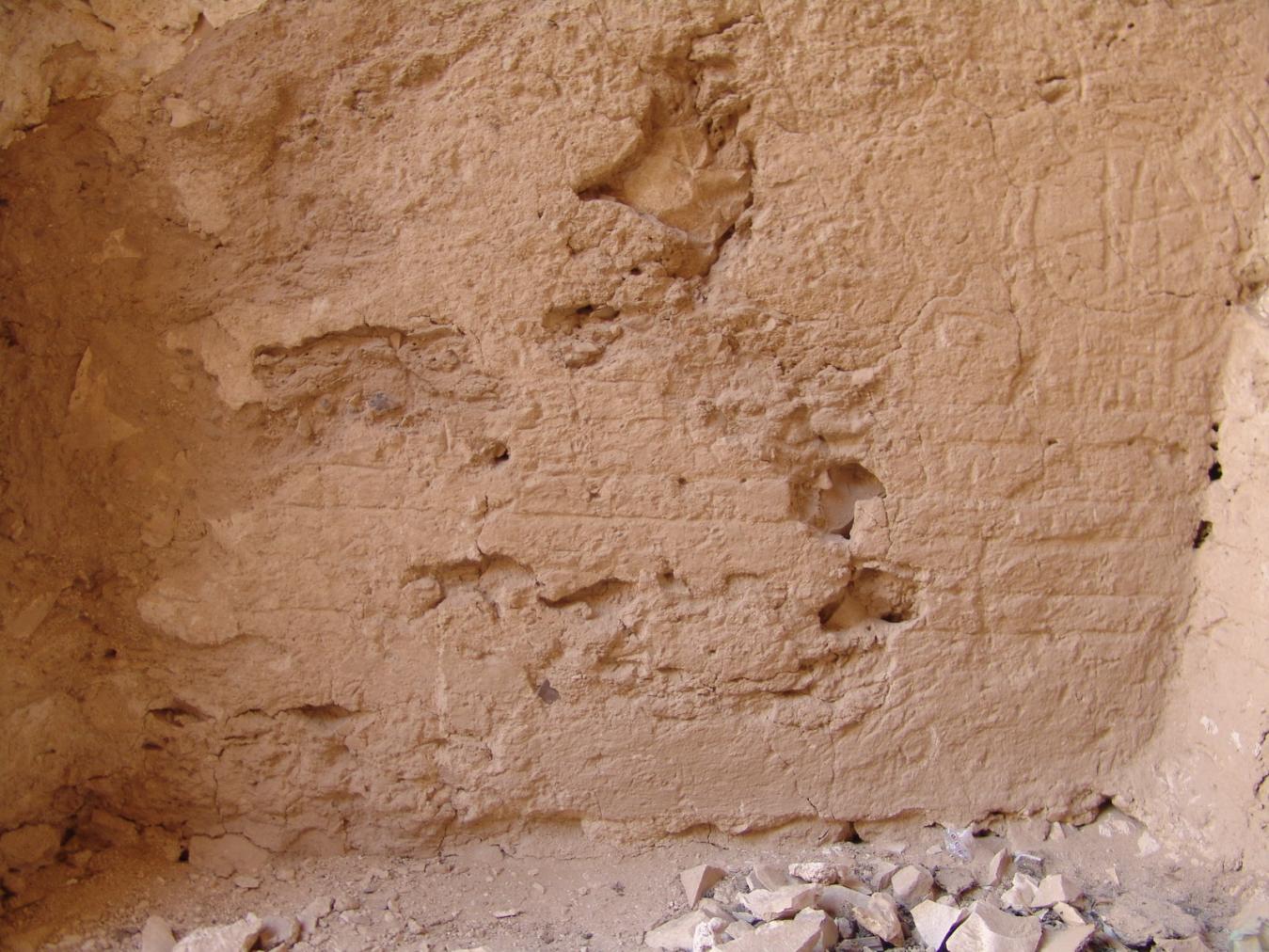
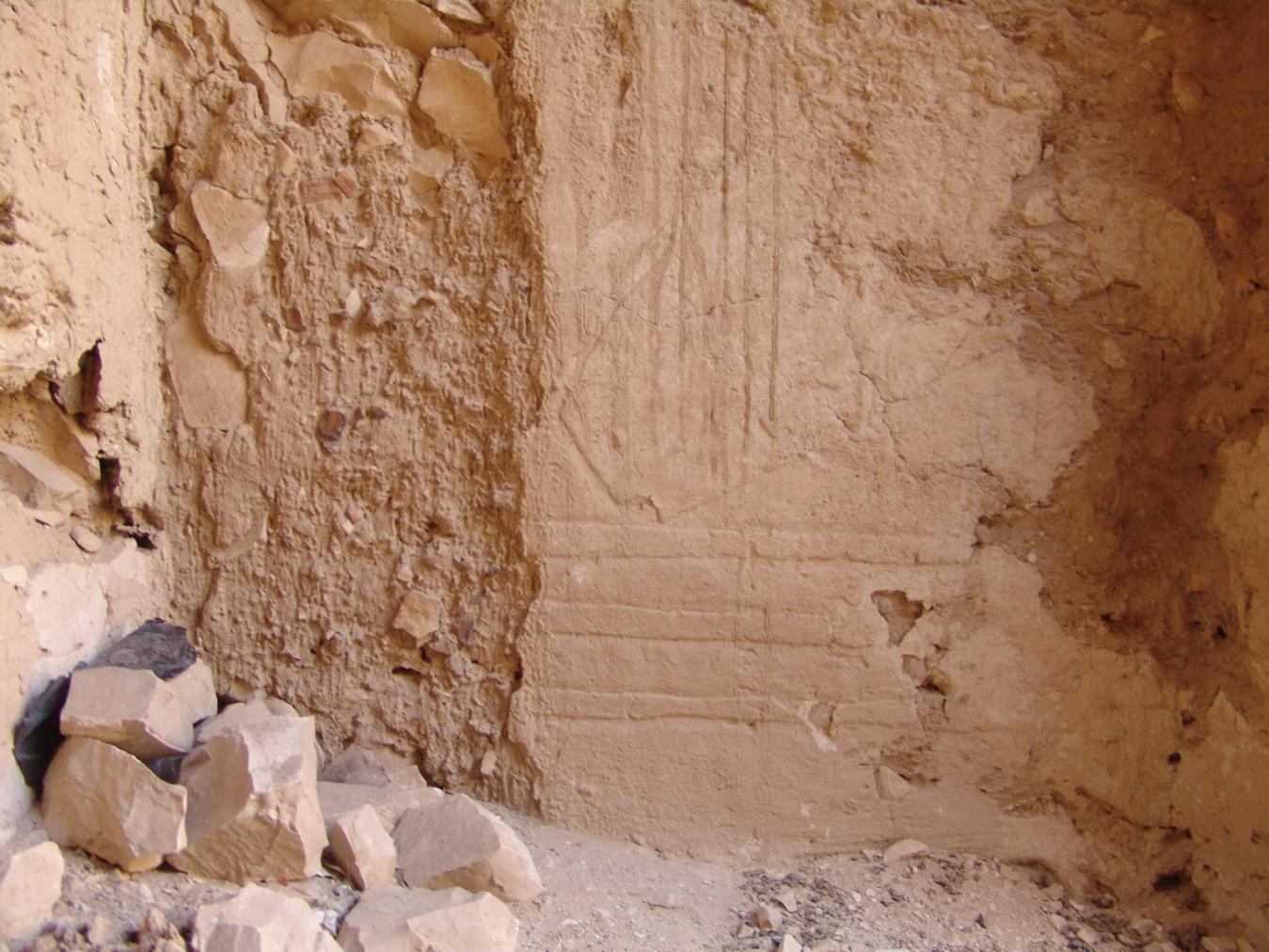
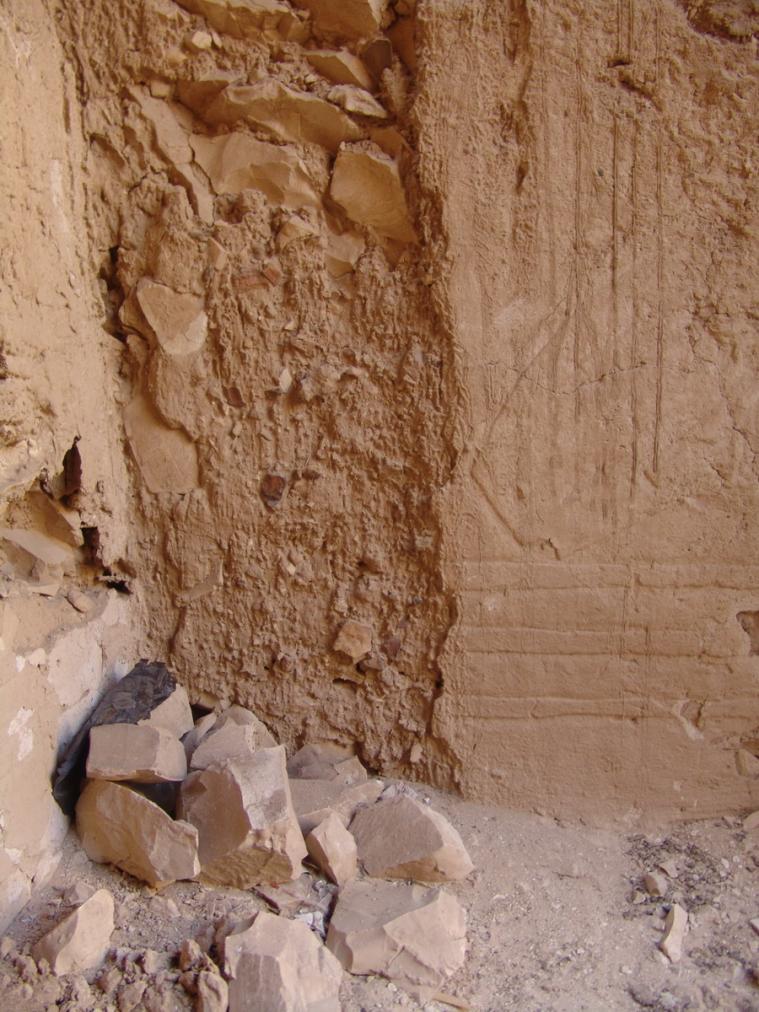
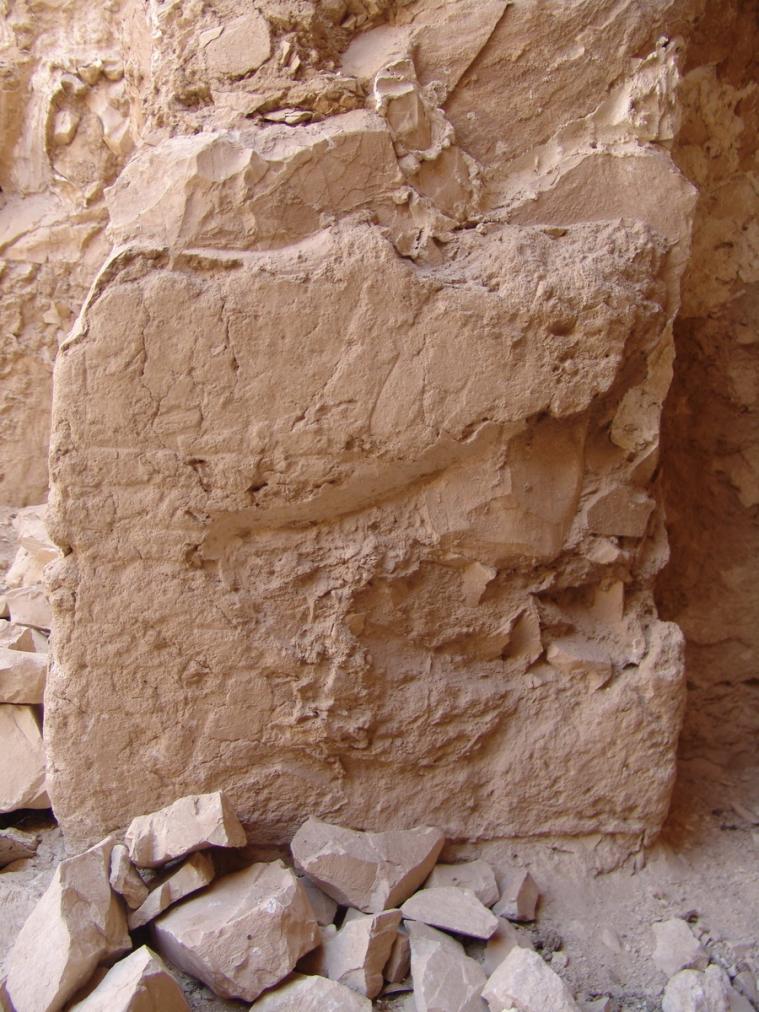
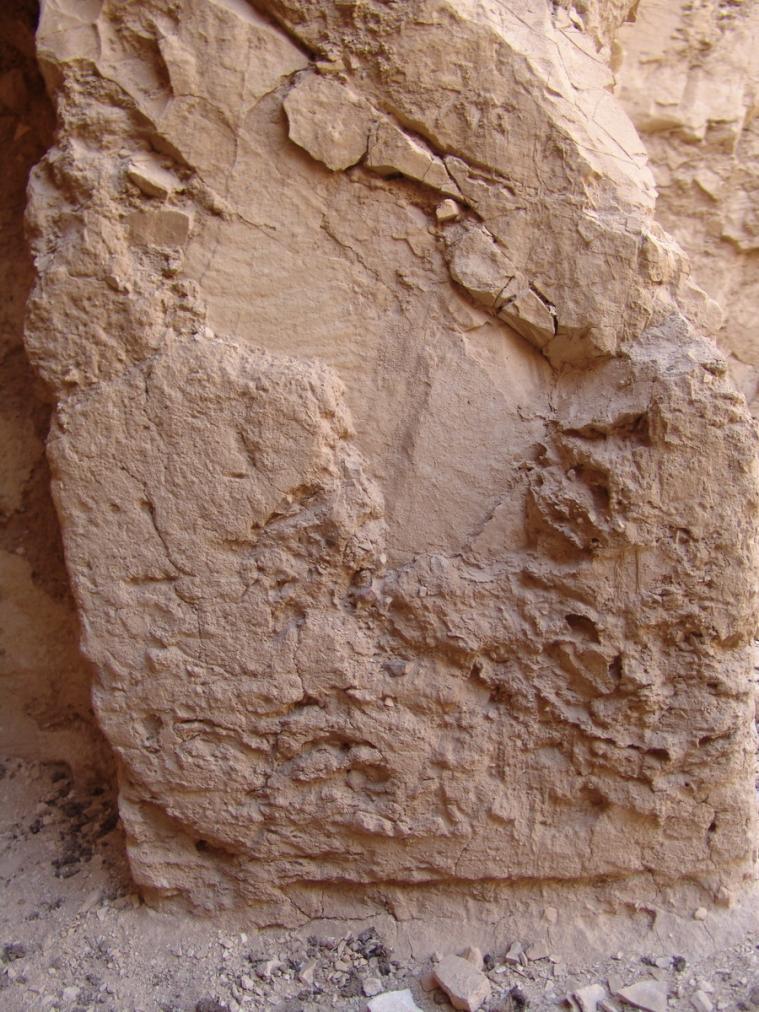
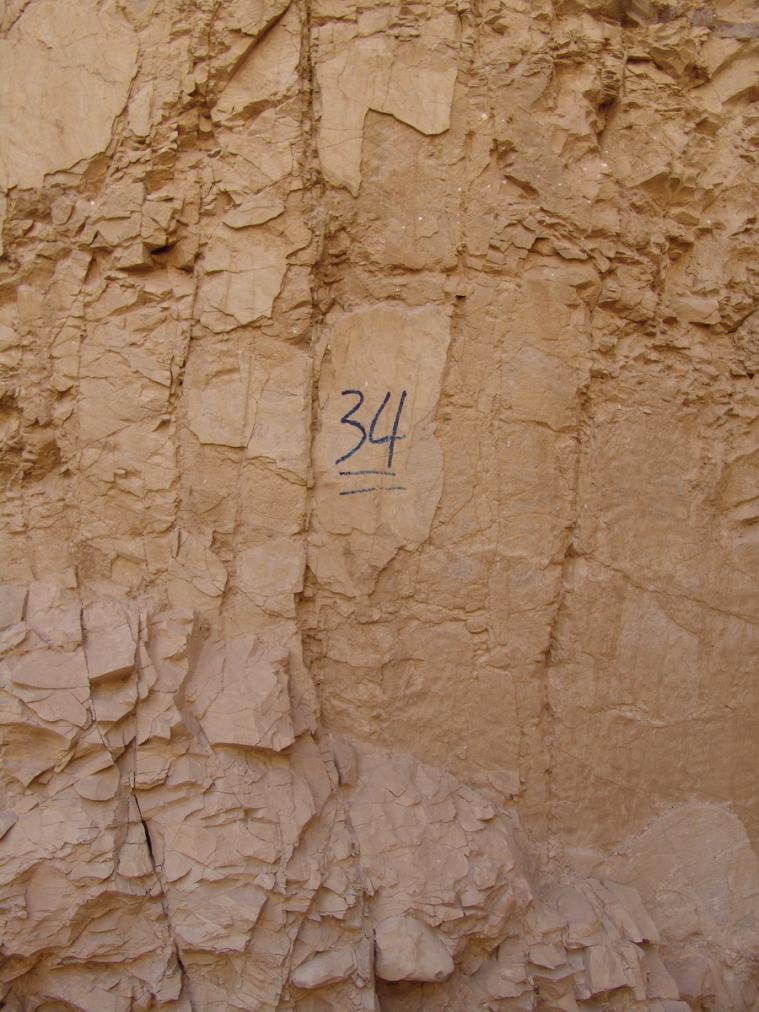
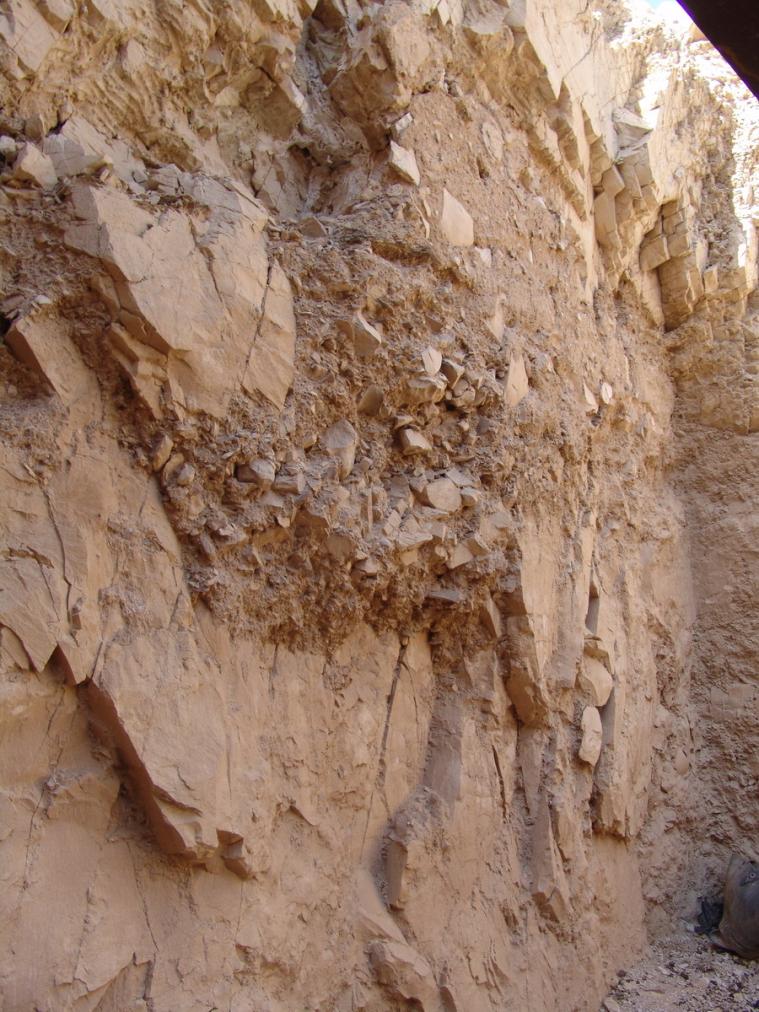
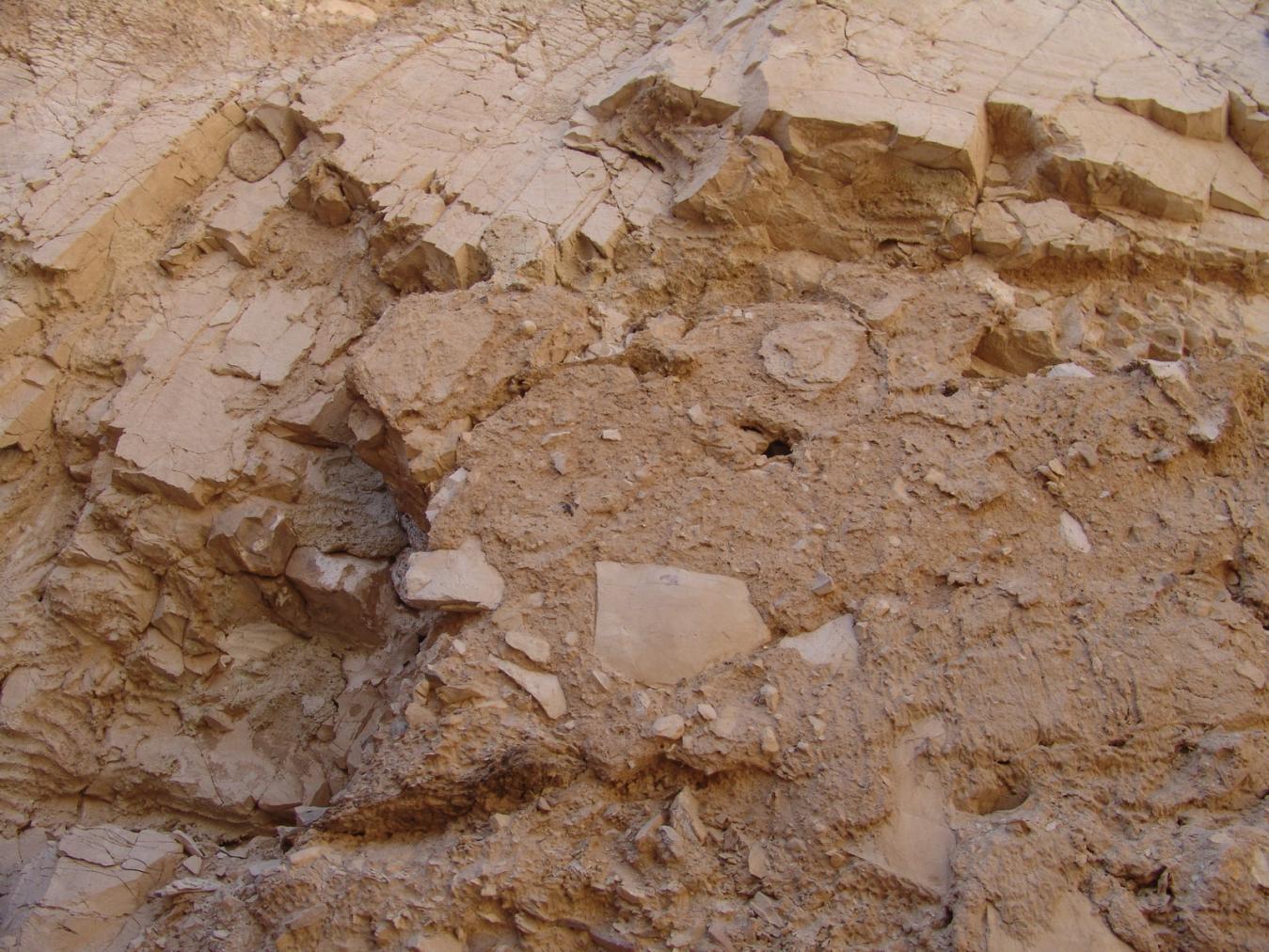
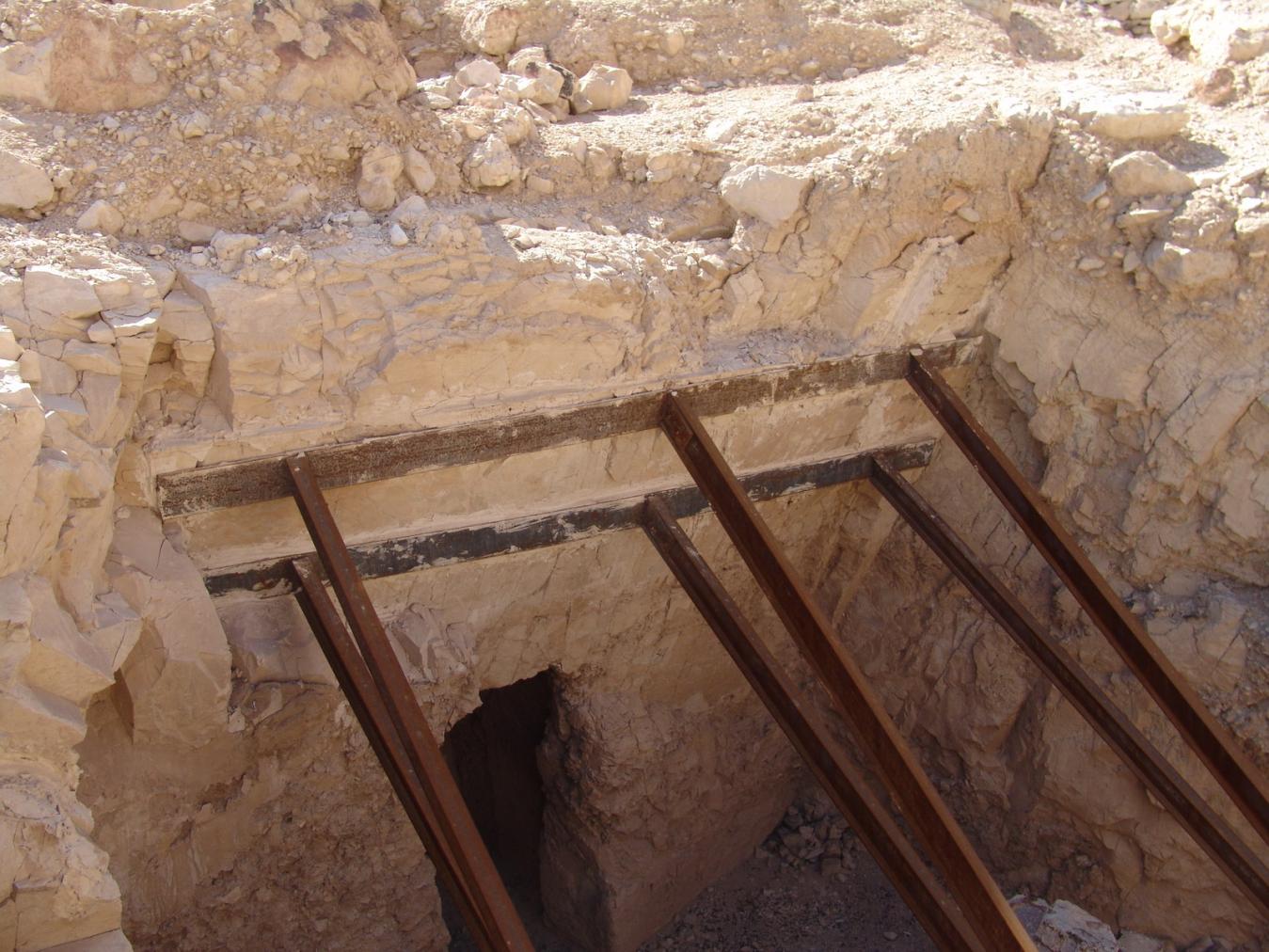
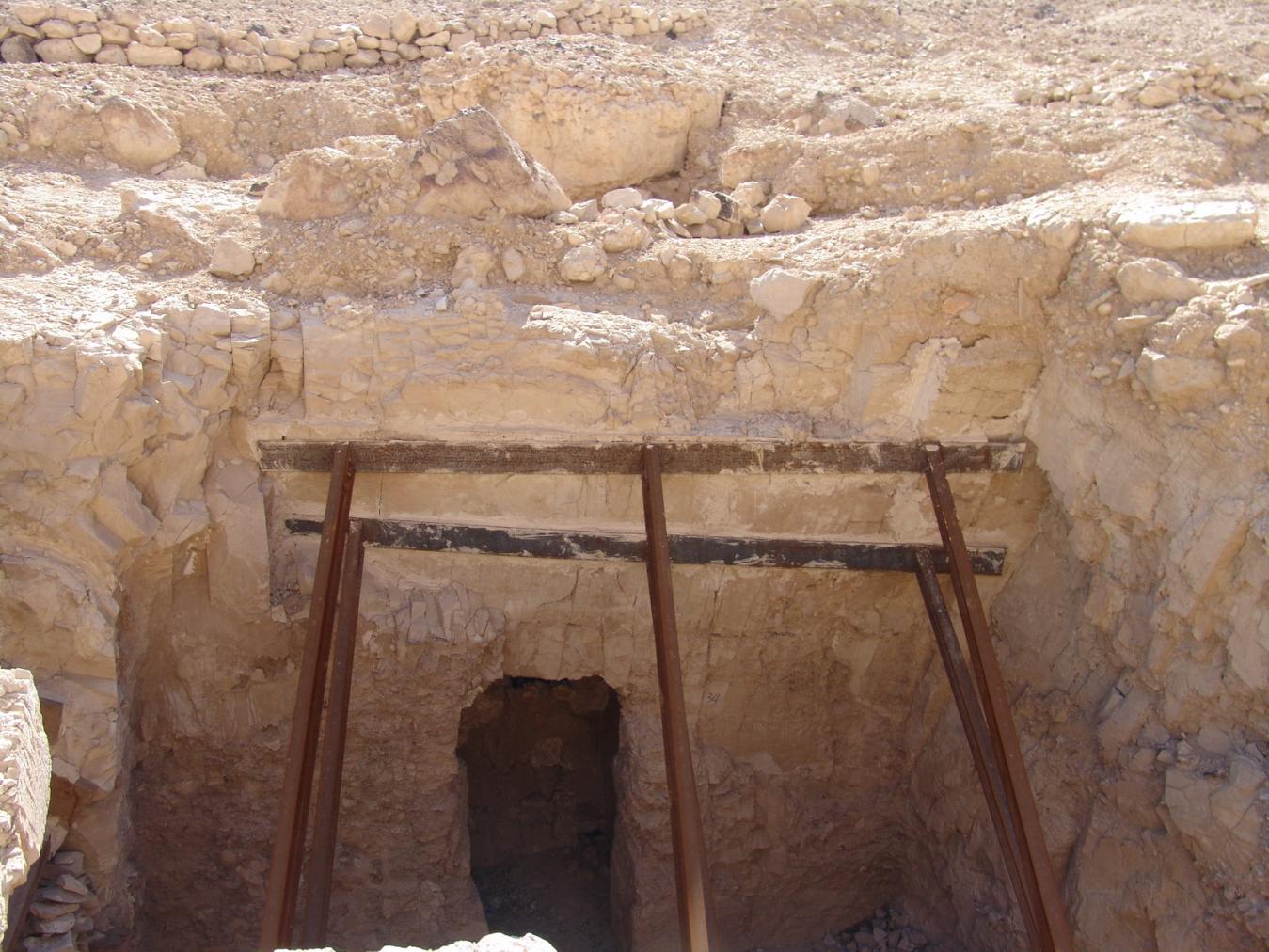
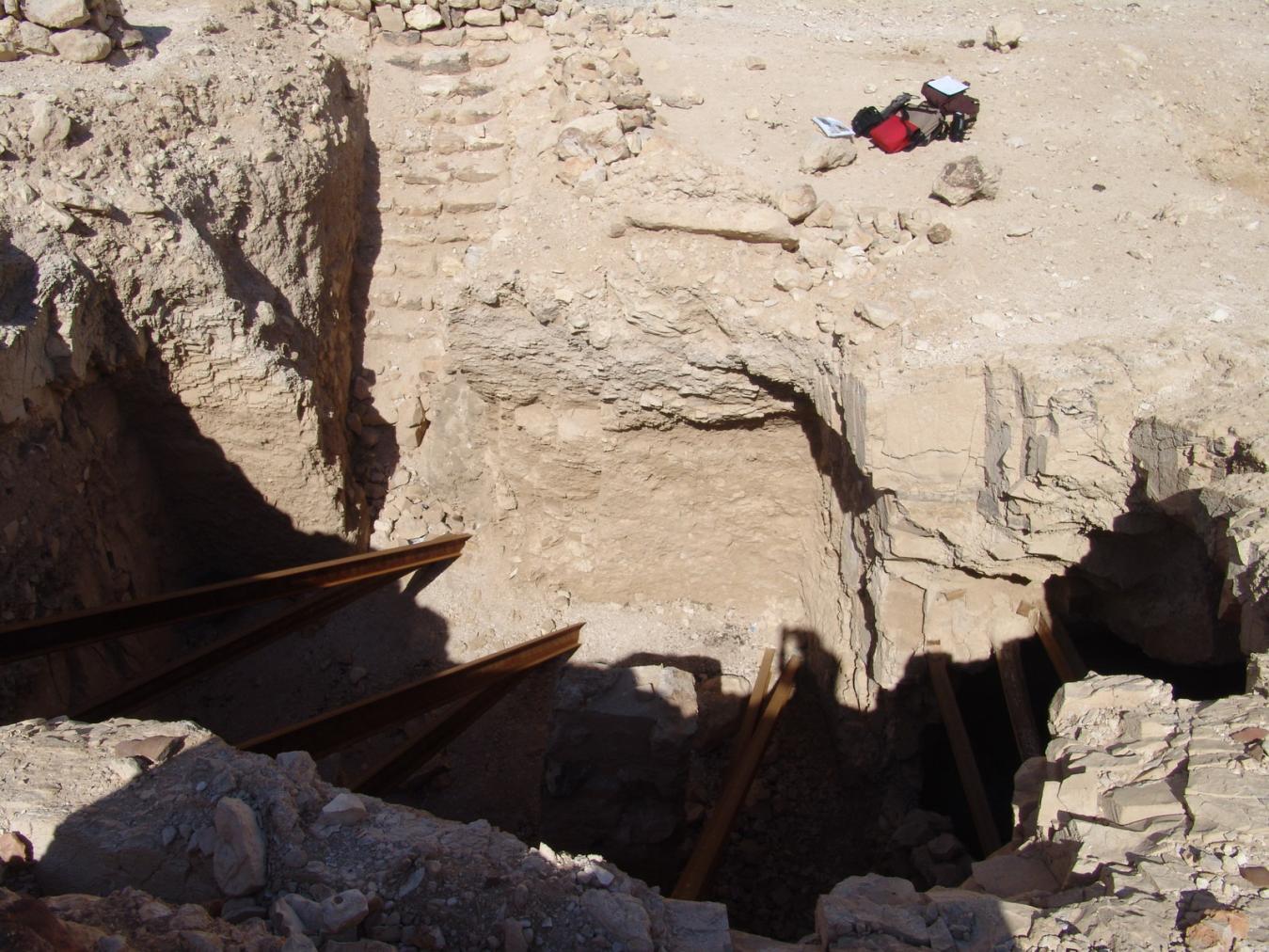
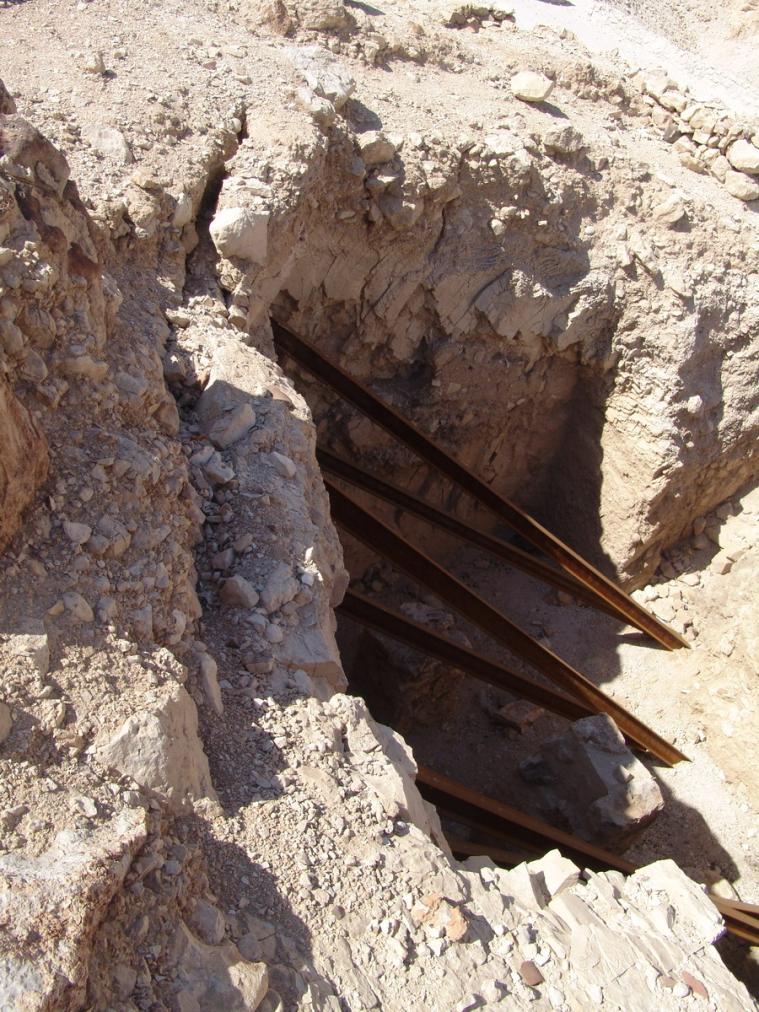
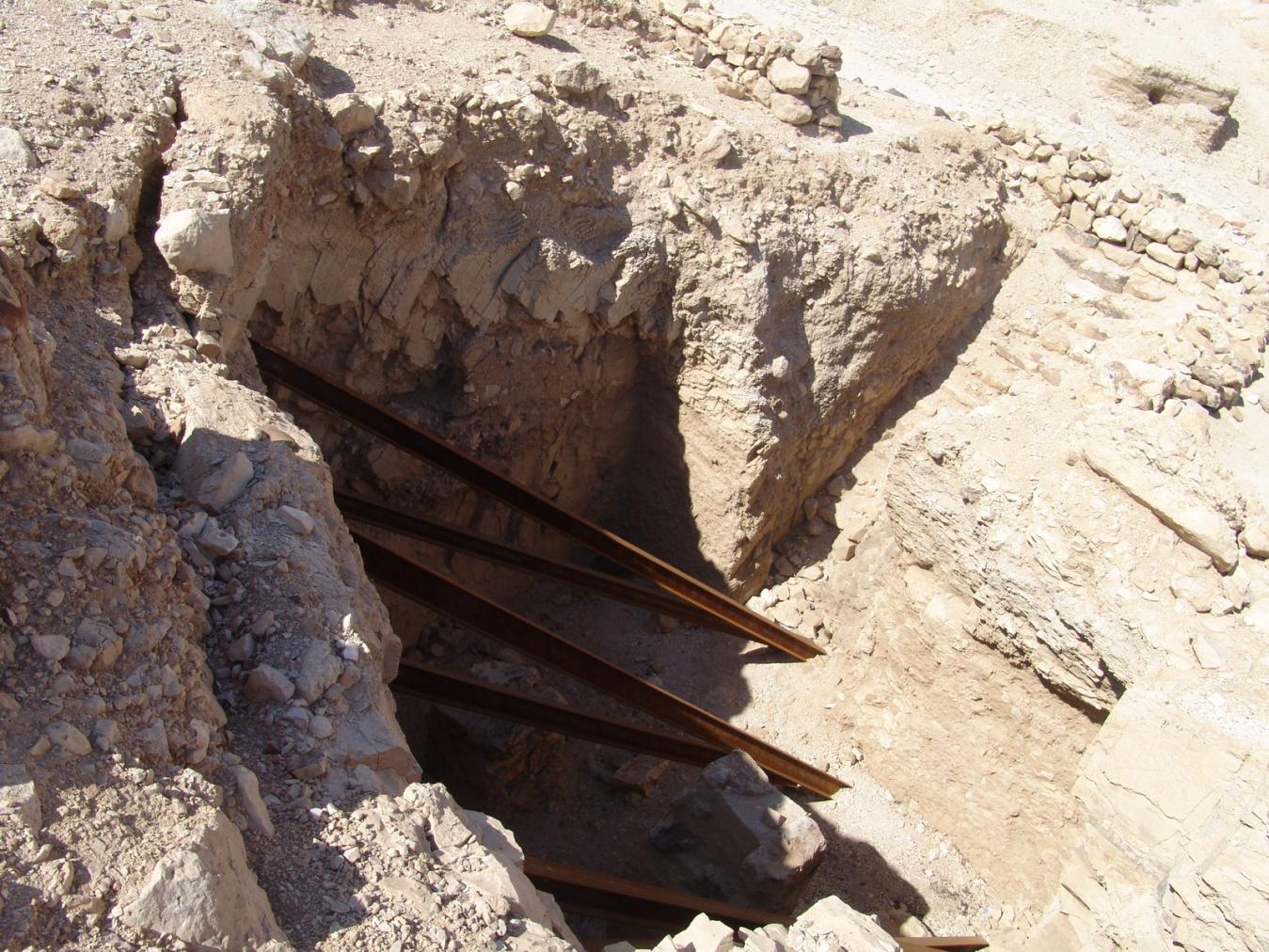
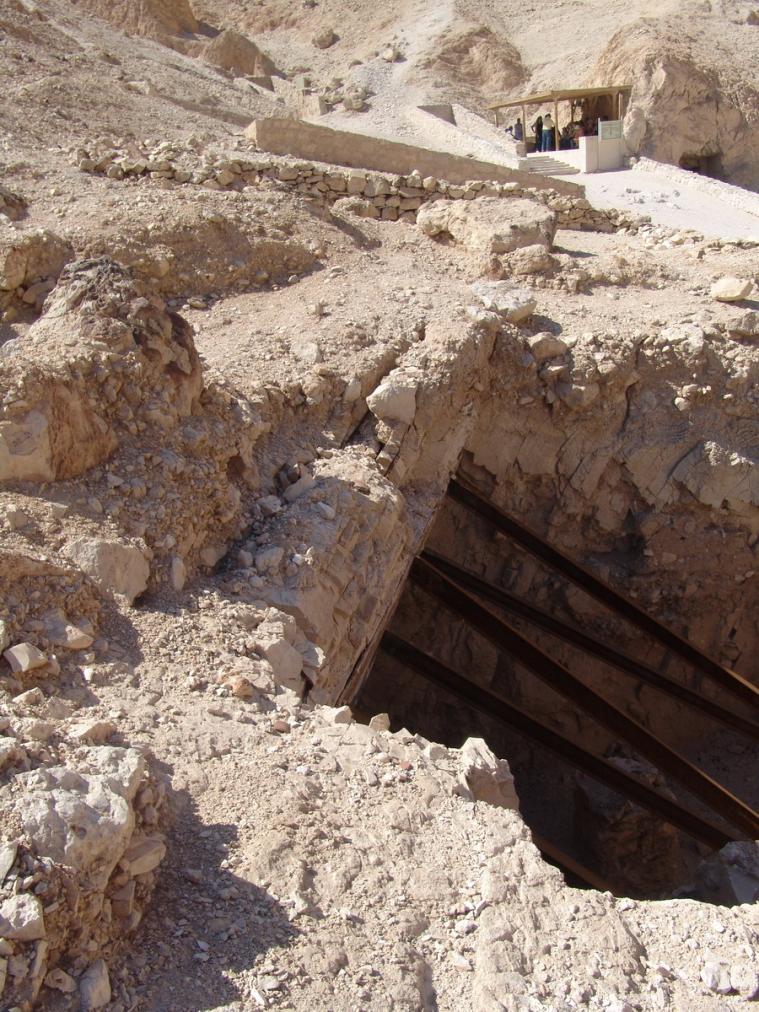
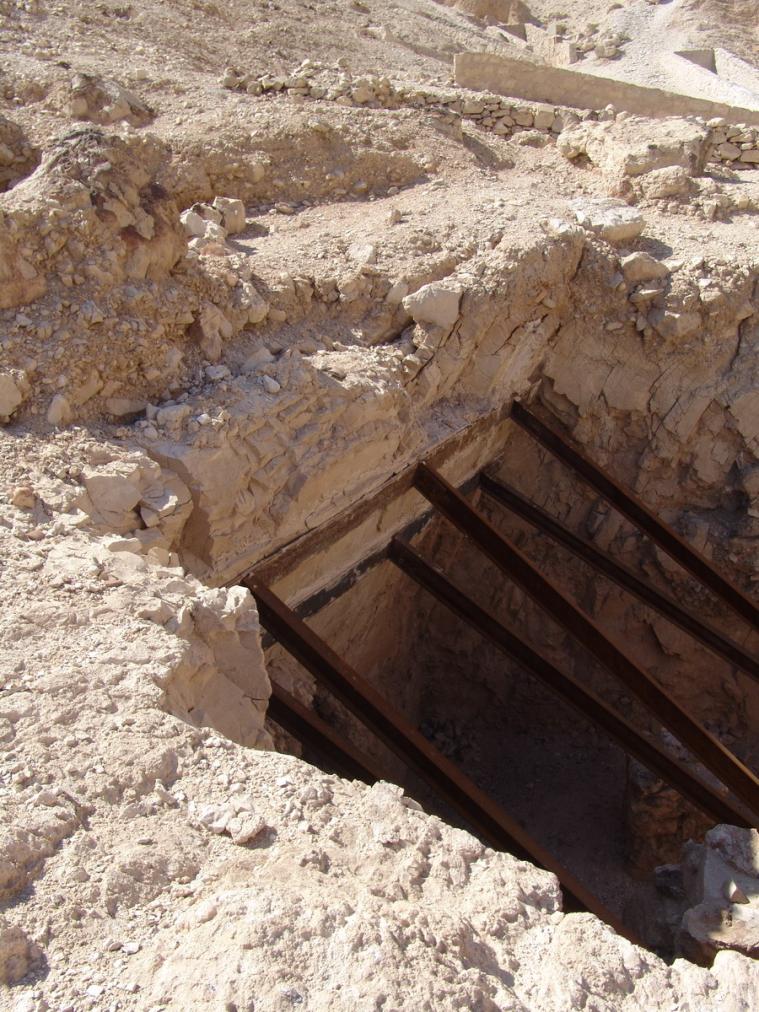
Articles
Tomb Numbering Systems in the Valley of the Queens and the Western Wadis
Geography and Geology of the Valley of the Queens and Western Wadis
Bibliography
Aston, D.A. The Theban West Bank from the Twenty-fifth Dynasty to the Ptolemaic Period. In: Nigel Strudwick, and John H. Taylor (Eds.). The Theban Necropolis: Past, Present and Future. London: British Museum, 2003: 138- 63.
Demas, Martha and Neville Agnew (eds). Valley of the Queens. Assessment Report. Los Angeles: The Getty Conservation Institute, 2012, 2016. Two vols.
Leblanc, Christian. Ta set nefrou: une nécropole de Thèbes-ouest et son histoire, 1: géographie- toponymie: historique de l'exploration scientifique du site. Cairo: Nubar Printing House, 1989.
Lecuyot, Guy. Une nécropole de Thèbes-Ouest à l'époque romaine et copte: la Vallée des Reines. Kyphi, 2 (1999): 33-61.
Loyrette, Anne-Marie, Magdi Fikri, Catherine Bridonneau, Said Amer El-Fiki, and Francis Janot. Vallée des Reines: la tombe VdR 34 d’une reine inconnue et le puits VdR 87. Memnonia, 9 (1998): 121-138.
Thomas, Elizabeth. The Royal Necropoleis of Thebes. Princeton: privately printed, 1966.
Wüst, Raphael. Valley of the Queens: Geological Investigations 2008 (Feb. 11-18). Report for the Getty Conservation Institute, 2008.


